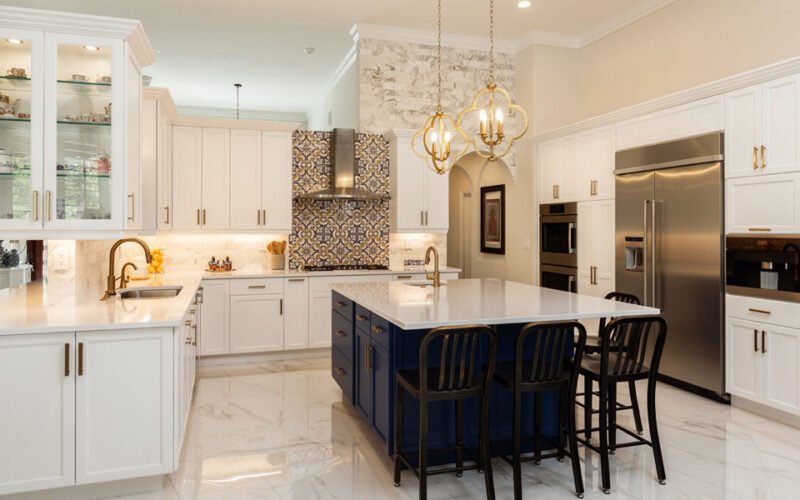When it comes to interior décor in Australian homes, lighting serves not only as a practical necessity but also as a key element in setting the mood and enhancing the aesthetic of a space. However, with an array of choices in the market, homeowners often find themselves in a quandary over the selection between warm and cool lighting. The essence of creating an inviting and functional space significantly hinges on this choice, thus it is imperative to understand the nuances of designer lighting in Australia in order to make an informed decision.
Understanding Warm and Cool Light
Before delving into the implications of different lighting temperatures in interior design, it is crucial to understand what these terms mean. Warm light is characterised by its cosy, yellow to red tones, creating a welcoming and relaxing ambience. It typically has a lesser degree of brightness and is often associated with traditional incandescent bulbs. Conversely, cool light exhibits a more blueish tint, imitating daylight. This type of lighting is brighter and more energising, often associated with productivity and alertness.
Warm Lighting: A Homely Glow
Warm lighting is particularly effective in creating a homely atmosphere. It is ideally suited for rooms where relaxation and comfort are the primary focus, such as living rooms and bedrooms. The yellowish hues of warm light are soft on the eyes and can add a layer of cosiness to the space. In Australian homes, where the balance between indoor and outdoor living is important, warm lighting works wonders in the evenings, providing a smooth transition from the bright daylight to a soothing indoor environment.
Cool Lighting: Bright and Vigorous
Cool lighting, on the other hand, resonates well with areas of the house that require fine attention and vigour. Kitchens, home offices, and bathrooms often benefit from cool lighting as it mimics the natural daylight, enhancing concentration and aiding in task completion. In homes down under, where natural light can be abundant, supplementing this with cool artificial light can create a seamless flow and maintain the clarity required for certain activities.
Balancing Warm and Cool Lighting for Optimal Effect
The key to achieving an optimal effect lies in striking a balance between warm and cool lighting. Layering different types of lighting fixtures can help achieve this harmony. For instance, main overhead lights can be cool to accentuate the natural light during the day, while strategically placed lamps with warm bulbs can be used to transform the space in the evening.
Considerations for Warm Lighting
Those leaning towards warm lighting must consider the various shades available within this category. Soft whites and yellows can range from subtle to intense. If a space has a lot of woodwork or uses a warm colour palette, warm lighting can accentuate these features and make the interiors look even more inviting. In addition, warm lighting tends to work particularly well with texture, such as fabrics and furniture finishes, enhancing the richness and depth.
Considerations for Cool Lighting
For homes that lean towards a minimalist or modern aesthetic, cool lighting can reinforce the clean lines and sharp contrasts typical of such styles. When selecting cool lighting, it is important to balance it with natural elements and neutral colours to prevent the space from feeling too stark or unwelcoming. Furthermore, where detail-oriented tasks are often carried out, cool lighting can provide the necessary brightness without causing strain to the eyes.
Switching Between Warm and Cool Lighting
Advancements in lighting technology now allow flexibility to switch between warm and cool lighting with ease. Dimmable LEDs and smart lighting systems can be programmed to change the colour temperature based on the time of day or the desired ambience. This versatility is immensely useful for adapting spaces to serve multiple purposes throughout the day.
Designing with Light
Bringing light into the heart of interior design is about more than just functionality. It presents an opportunity to create dynamic interiors that respond to the rhythms of nature and the needs of occupants. In Australia’s ever-changing landscape, adjusting lighting can also be about adapting to seasonal changes, making spaces feel cooler during hot summers or warmer in the chill of winter.
Choosing the Right Fixtures
Whilst light temperature is a defining aspect of interior ambience, the selection of lighting fixtures is equally significant. A lighting shop in Australia that showcases a range of contemporary and classic designs allows homeowners to find fixtures that can integrate seamlessly with both warm and cool lighting choices. Ultimately, it’s about crafting spaces that resonate with personal taste while maintaining functionality.
Final Thoughts
In conclusion, whether warm or cool lighting suits an Australian home best is conditional on the intended use of the space, personal preferences, and overall interior design. The effect of lighting on the mood and functionality of interiors cannot be understated. Exploring the plethora of options available in designer lighting in Australia can open up new avenues for enhancing both the aesthetic appeal and comfort levels of different rooms, creating spaces that are not only visually pleasing but also aligned with the lifestyles of their inhabitants.
To create beautifully lit interiors that meet your specific needs, consider the entire spectrum of lighting temperatures and fixtures. Remember, lighting is an art form that, when mastered, can transform everyday living into an extraordinary experience.






